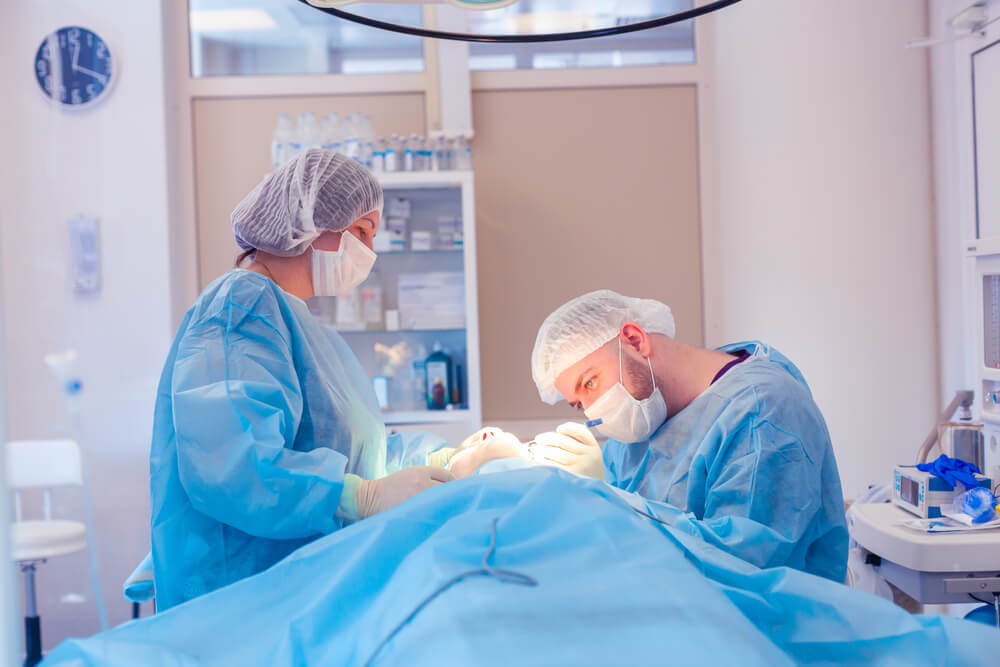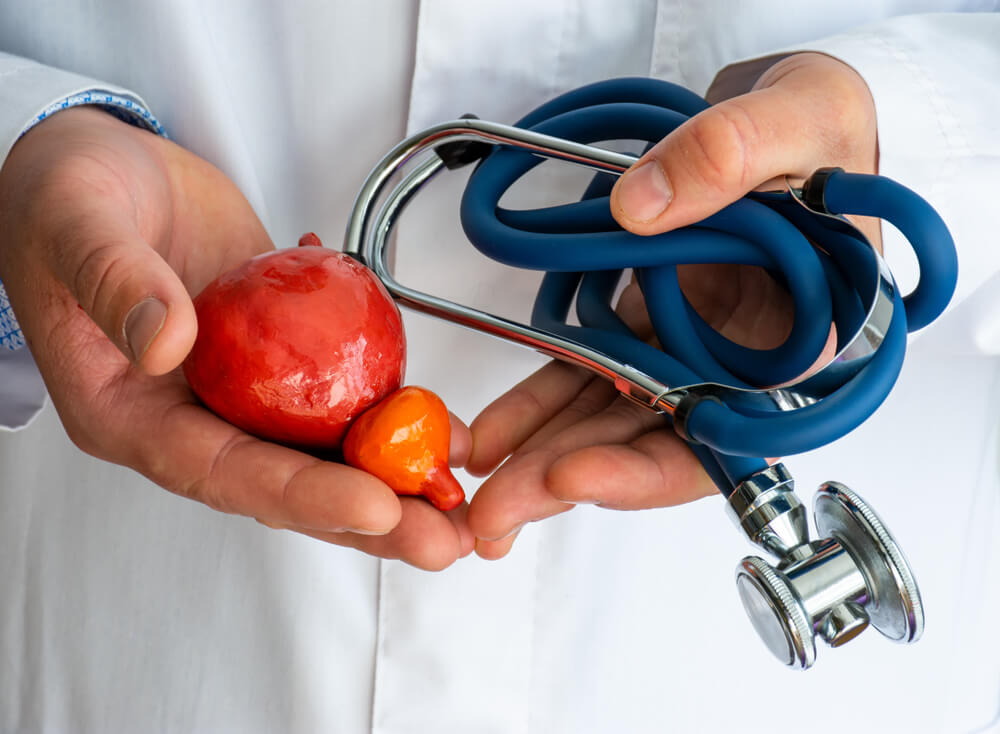A physician may use cystoscopy with hydrodistention to take a very close look at the bladder wall. This procedure is used in the diagnosis of interstitial cystic (IC)/bladder pain syndrome (BPS), commonly referred to as IC/BPS. This article will offer a background on the procedure and what to expect after a cystoscopy.
What Is Bladder Distention?
Bladder distention is a procedure where a physician stretches the bladder using water. This procedure is used as an assessment and treatment for patients who suffer from symptoms of a hypersensitive bladder, such as the urgent and frequent desire to pass urine and bladder pain.
If you are suffering from some kind of bladder issue, examination and biopsies of the bladder can rule out other more serious problems, such as bladder cancer. During the inspection, any small growths that are found can easily be removed at that time. If growths are removed, the bladder stretch will not be performed.
Bladder hydrodistention can help diagnose IC/BPS. Normal bladder capacity is about one liter. Bladder capacity can be reduced by IC/BPS, but not always. The low bladder capacity can be a direct indication of how serious the condition is. About 5-10% of patients with IC have ulcers within their bladder. The ulcers can be treated by a doctor, and the treatment usually offers relief from bladder pain. Treatment of these ulcers, however, may require the patient to stay in the hospital for 1-2 days.
This procedure requires careful consideration and discussions with your urologists to ensure it is the right path to take.
The Procedure

Before patients go in for their appointment, they will be given instructions to fast beforehand. When patients go in for the procedure, they will be placed under general anesthesia. While asleep, a cystoscope will be inserted up the urethra (the tube that runs from the bladder and allows you to pass urine). The physician will do an initial inspection of the lining inside of the bladder. The doctor will be looking for Hunner’s ulcers, lesions, growths, or any abnormal tissue.
Sterile water will then be injected into the bladder at very low pressure until it is full, and the doctor will measure the bladder’s capacity. These procedures must be performed at low pressure and short duration to prevent bladder rupture.
This filling procedure is repeated to stretch the bladder. The stretching of the bladder will allow the doctor to see any areas of bleeding from the lining of the bladder. This bleeding can be a sign of Interstitial Cystitis (IC), although, it can also be a sign of other conditions and can even be seen in some normal bladders. The doctor will take biopsies of the bladder lining if there are signs of abnormal tissue or lesions. These samples will be sent to the lab for analysis to rule out cancer and other serious conditions. This entire procedure should only take about 20 minutes, and the patient is under anesthesia the whole time.
How Does This Procedure Relieve Symptoms?
The exact way bladder hydrodistention works to relieve symptoms is not fully known. It’s believed that it may damage the nerve endings of the bladder lining that are oversensitive, removing their ability to send pain signals. There has been no evidence that suggests stretching of the bladder will result in long-term bladder dysfunction.
What to Expect After a Cystoscopy
Upon coming off anesthesia, the pain may be worse than it was before the procedure. After you pass urine adequately, you will be able to go home. The first few times that you urinate may be quite painful. There will likely be a burning sensation, and you may see some blood. Your doctor will schedule a follow-up appointment one to two weeks after the procedure.
After cystoscopy, under no circumstances should you drink soda, cranberry juice, or orange juice. Only drink low acidic beverages such as water or apple juice.
How Long Does It Take to Heal From Cystoscopy?
Cystoscopy with hydrodistention recovery time varies per individual. Some people may return to work in just a few days, while others may need a week off work. Pain can be quite severe in some individuals for the first 24-48 hours, so the patient will be prescribed a small amount of pain medication, such as Vicodin. However, there may still be pain that slowly improves over a two to three-week period. Around 60% of patients will notice an improvement in their symptoms that will last, on average, six to nine months.

Potential Risks and Complications
If for some reason, the bladder was ruptured during the procedure, the recovery time may be substantially longer. You will be required to rest and carefully follow the IC diet meant to avoid irritating the traumatized bladder further. Placing a heating pad on your bladder can provide soothing relief.
Pain while urinating and the presence of blood should slowly dissipate over the first week after the procedure. However, bladder infections are a possible complication. Around 5% will develop a bladder infection within the days following the procedure. If you are experiencing worsening pain, sudden fever, or an increase in blood in your urine, contact your doctor immediately as you will likely need antibiotic therapy. To determine if you have a bladder infection, your doctor will order a urine test.
A perforated bladder is a very small risk of this procedure. A bladder that is severely diseased or thin is at a higher risk of perforation. Signs of a perforated bladder include heavy bleeding or bleeding that does not resolve itself after 24-48 hours. Treatment will include leaving a catheter in to drain the bladder for at least five to seven days. In serious cases, open surgery may be required. Damage to the bladder’s blood supply from stretching is very rare and unlikely.
The information just provided is not meant to alarm you, but rather inform you of the possible risks and potential complications with cystoscopy with hydrodistention. It is important to always discuss risks and benefits with your urologist.
Most people who suffer from IC/BPS will benefit from a bladder hydrodistention procedure. While the procedure is not a permanent fix to the problem, it does provide much-needed relief in many cases. The procedure can be repeated in individuals who have seen previous success. Some individuals may not see improvement in their condition until the second or third procedure, which is why it is important to talk to your doctor and show up to all follow-up appointments.
Sarah St. Louis is Board Certified in Obstetrics and Gynecology. She specializes in robotic surgery, female pelvic reconstructive vaginal surgery, and urogynecology. Here at Associates in Urogynecology, we are here to help you. We specialize in female pelvic medicine and reconstructive surgery.
Call us and book your appointment today.




Leave A Comment